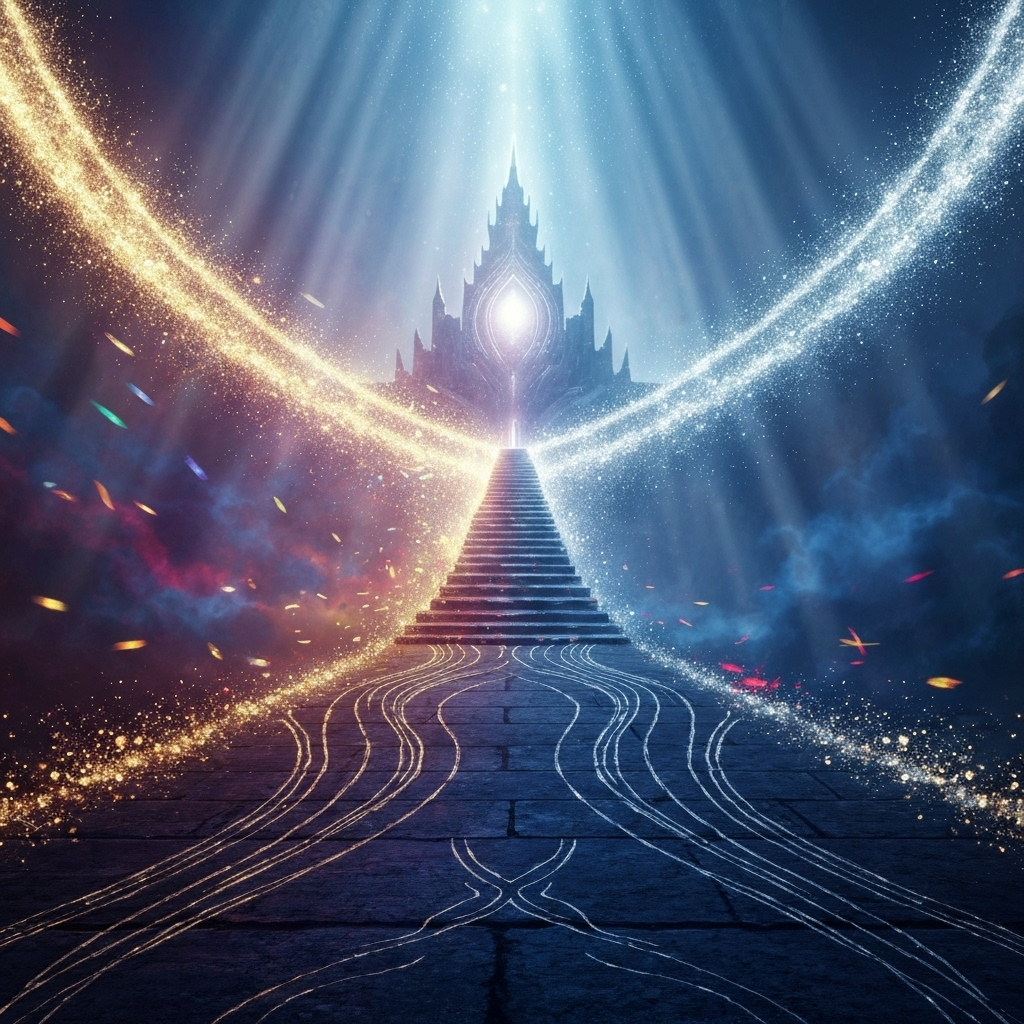
The Katha Upanishad is one ofthe most widely known and profound of the Upanishads. It tells the story of a young boy, Nachiketa, who boldly engages in a dialogue with Yama, the God of Death, to unravel the mysteries of life, death, and the nature of the Self (Atman).
This guide will help you navigate the core teachings of this compelling spiritual classic.
The Story: A Quest for Truth
The Upanishad begins with Nachiketa being sent to the abode of Yama. Granted three boons, Nachiketa's first two wishes are for worldly peace. For his third and final boon, he asks the ultimate question: "What happens after death? Does the Self exist, or does it not?"
Yama is reluctant to answer, offering Nachiketa immense worldly wealth and power instead. But the young boy remains steadfast, rejecting all temporary pleasures for the sake of eternal truth. Impressed by his resolve, Yama proceeds to reveal the secrets of the Atman.
Key Teachings of the Katha Upanishad
As you read, pay attention to these central themes, which are often conveyed through powerful metaphors:
- The Two Paths (Shreya and Preya): Yama explains the difference between Preya (the path of the pleasant, which leads to temporary satisfaction) and Shreya (the path of the good, which leads to lasting liberation). Nachiketa's choice of Shreya is the foundation of the dialogue.
- The Chariot Allegory: This is one of the most famous metaphors in Indian philosophy.
- The Body is the chariot.
- The Self (Atman) is the master of the chariot.
- The Intellect (Buddhi) is the charioteer.
- The Mind (Manas) is the reins.
- The Senses are the horses. The Upanishad teaches that one must use a sharp intellect to control the mind and senses to reach the ultimate destination: the state of Vishnu (Supreme Consciousness).
- The Nature of the Atman: Yama describes the Self as eternal, unborn, and unchanging. It is not slain when the body is slain. Realizing this truth is the key to transcending fear and death.
How to Read the Katha Upanishad on VedaSeek
- Follow the Narrative: Unlike some other Upanishads, the Katha has a strong narrative flow. Read it like a story to fully appreciate the context of the teachings.
- Unpack the Metaphors: When you encounter the chariot allegory or other symbolic language, use the "Explain Verse" feature to delve into its deeper meaning.
- Contemplate the Questions: Put yourself in Nachiketa's shoes. The questions he asks are universal. Take time to reflect on them personally.
The Katha Upanishad is a powerful guide for any seeker wanting to understand the nature of reality beyond the physical world. It is a journey from the fear of mortality to the freedom of immortality.